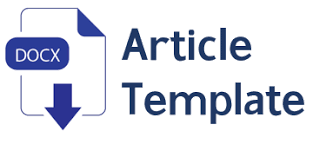Effectiveness of the PERMAJA Educational Program in Enhancing Adolescent Reproductive Health Knowledge During Disasters
Downloads
Background: Adolescents are among the most vulnerable groups during disasters, often facing an increased risk of sexual violence, poverty, and other reproductive health threats. These risks are exacerbated by the lack of private spaces for changing clothes, unsecured shelters, and shared toilet facilities for males and females in evacuation areas. Objective: This study aims to assess adolescents' knowledge of reproductive health in disaster situations and to develop empowerment activities through the PERMAJA (Peduli Kespro Masa Remaja) program. Methods: A quantitative descriptive study with a cross-sectional design was conducted involving 160 adolescents from three flood-prone areas in Central Java: Grobogan, Demak, and Semarang. The study was carried out from July to September 2024. Data were collected using a structured questionnaire and analyzed using univariate analysis to measure changes in knowledge before and after the educational intervention. Results: The findings showed an increase in adolescents' understanding of reproductive health during disasters following the educational sessions. The average score rose from 6.28 in the pre-test to 6.34 in the post-test. Although the increase in average scores was modest, the variation in responses indicated a broader comprehension of the topic among participants. Conclusion: The PERMAJA initiative contributed positively to enhancing adolescents' knowledge of reproductive health in disaster contexts. The program demonstrates the potential of targeted education in empowering vulnerable youth populations, particularly in high-risk disaster-prone areas.
Asrofi, A., Hardoyo, S.R. and Sri Hadmoko, D. (2017), “Strategi Adaptasi Masyarakat Pesisir Dalam Penanganan Bencana Banjir Rob Dan Implikasinya Terhadap Ketahanan Wilayah (Studi Di Desa Bedono Kecamatan Sayung Kabupaten Demak Jawa Tengah)”, Jurnal Ketahanan Nasional, Universitas Gadjah Mada, Vol. 23 No. 2, p. 1, doi: 10.22146/jkn.26257.
Batjo, S.H., Arsyad, G. and Admasari, Y. (2022), “Kesiapsiagaan Masyarakat Terhadap Kesehatan Reproduksi Dalam Menghadapi Situasi Bencana”, JMM (Jurnal Masyarakat Mandiri), Universitas Muhammadiyah Mataram, Vol. 6 No. 4, p. 3280, doi: 10.31764/jmm.v6i4.9584.
Desinta, D. and Sitorus, J.R.H. (2021), “Pengaruh Kejadian Bencana Alam dan Sosial Demografi Terhadap Kemiskinan di Jawa Tengah Tahun 2017-2020”, Seminar Nasional Official Statistics, Vol. 1, pp. 383–392.
Hammad, M., Foster, A.M., Aissaoui, A., Clark, E., Elamurugan, K., Rajendra, K.L., El Mowafi, I.M., et al. (2023), “Exploring the feasibility of establishing a core set of sexual, reproductive, maternal, newborn, child, and adolescent health indicators in humanitarian settings: results from a multi-methods assessment in Jordan”, Reproductive Health, Vol. 20 No. 1, doi: 10.1186/s12978-023-01589-w.
Hasan Basri, A. and Istiroha. (2020), “Pelatihan Kesiapsiagaan Dengan Media Power Point dan Media Video Dalam Meningkatkan Kesiapsiagaan Bencana Bajir Pada Siswa SMA”, Journal of Ners Community, Vol. 11 No. 2, pp. 202–215.
Kementerian Kesehatan. (2021), Pedoman Pelaksanaan Paket Pelayanan Awal Minimum (PPAM) Kesehatan Reproduksi Pada Krisis Kesehatan, Kementerian Kesehatan Republik Indonesia, Jakarta.
Kementerian kesehatan RI. (2017), Pedoman Pelaksanaan Paket Pelayanan Awal Minimum (PPAM) Kesehatan Reproduksi Remaja Pada Krisis Kesehatan, UNFPA.
Kimura, R. and Aikawa, K. (2024), “Proposal for a Disaster Management Drill Program for High School Students Who Have Never Experienced a Disaster to Foster a Sense of ‘Awareness that Disaster Affects Everyone’”, Journal of Disaster Research, Fuji Technology Press, Vol. 19 No. 1, pp. 124–138, doi: 10.20965/jdr.2024.p0124.
Kirana, Z. (2020), “Partisipasi Remaja dalam Kegiatan Pelayanan Kesehatan Peduli Remaja”, Higeia Journal Of Public Health Research And Development, Vol. 4 No. 4, doi: 10.15294/higeia.v4iSpecial%204/34737.
Kobeissi, L., Pyone, T., Moran, A.C., Strong, K.L. and Say, L. (2022), “Scaling up a monitoring and evaluation framework for sexual, reproductive, maternal, newborn, child, and adolescent health services and outcomes in humanitarian settings: A global initiative”, Dialogues in Health, Vol. 1, doi: 10.1016/j.dialog.2022.100075.
Marfai, M.A., Wijayanti, H., Triyanti, A. and Riasasi, W. (2020), Pengurangan Risiko Bencana Berbasis Ekosistem Di Pesisir Utara Jawa Tengah, Gadjah Mada University Press, Yogyakarta.
Nurhaya, S., Patui, S., Mantao, E., Ponto, N.S., Studi, P., Masyarakat, K., Kesehatan, F., et al. (2024), “Upaya Kesiapsiagaan Masyarakat Terhadap Kesehatan Reproduksi Dalam Menghadapi Situasi Bencana Di Desa Lompio Kecamatan Sirenja”, JURNAL Dedikatif Kesehatan Masyarakat, Vol. 4 No. 2, pp. 78–86, doi: 10.22487/dedikatifkesmas.v3i1.556.
Patui, N.S., Mantao, E. and Ponto, N.S. (2024), “Upaya Kesiapsiagaan Masyarakat Terhadap Kesehatan Reproduksi Dalam Menghadapi Situasi Bencana Di Desa Lompio Kecamatan Sirenja”, Dedikatif Kesehatan Masyarakat, Vol. 4 No. 2, pp. 78–86, doi: 10.22487/dedikatifkesmas.v3i1.556.
Salim, M.A. and Siswanto, A.B. (2021), “Kajian Penanganan Dampak Banjir Kabupaten Pekalongan”, Rang Teknik Journal, LPPM Universitas Muhammadiyah Sumatera Barat, Vol. 4 No. 2, pp. 295–303, doi: 10.31869/rtj.v4i2.2525.
Sholichah, Z., Suharto, Y., Sahrina, A. and Soelistijo, D. (2023), “Pengembangan media powerpoint interaktif materi mitigasi dan adaptasi bencana alam untuk meningkatkan hasil belajar siswa”, Jurnal Integrasi Dan Harmoni Inovatif Ilmu-Ilmu Sosial.
Stephens, J.H. and Lassa, J.A. (2020), “Sexual and reproductive health during disasters: A scoping review of the evidence”, International Journal of Disaster Risk Reduction, Elsevier Ltd, Vol. 50, doi: 10.1016/j.ijdrr.2020.101733.
UNESCO. (2019), Meaningfully Engaging with Youth Guidance and Training for UN Staff.

This work is licensed under a Creative Commons Attribution-NonCommercial-ShareAlike 4.0 International License.

In order to be accepted and published by Jurnal Promkes: The Indonesian Journal of Health Promotion and Health Education, Author(s) who submit an article should complete all the review process. The copyright of received articles assigned to the Jurnal Promkes: The Indonesian Journal of Health Promotion and Health Education,and Department of Health Promotion and Behavior Science, Universitas Airlangga as publishers of the journal. The intended copyright includes the rights to publish articles in various forms (including reprints).
Jurnal Promkes: The Indonesian Journal of Health Promotion and Health Education's website. Authors are allowed to use their works for any purposes deemed necessary without written permission from Jurnal Promkes: The Indonesian Journal of Health Promotion and Health EducationS and/or Department of Health Promotion and Behavior Science, Universitas Airlangga with an acknowledgement of initial publication in this journal.
The Editorial Team of Jurnal Promkes: The Indonesian Journal of Health Promotion and Health Education and Department of Health Promotion and Behavior Sciences strive to ensure that no errors occur in the articles that have been published, both data errors and statements in the article.
Users of this website will be licensed to use materials from this website following the Creative Commons Attribution-NonCommercial-ShareAlike 4.0 International License. No fees charged. Please use the materials accordingly.
------------------------------------------------------------------------------------------------------------------------------------------------------------------------------------------
Attribution ” You must give appropriate credit, provide a link to the license, and indicate if changes were made. You may do so in any reasonable manner, but not in any way that suggests the licensor endorses you or your use.
NonCommercial ” You may not use the material for commercial purposes.
ShareAlike ” If you remix, transform, or build upon the material, you must distribute your contributions under the same license as the original.


























